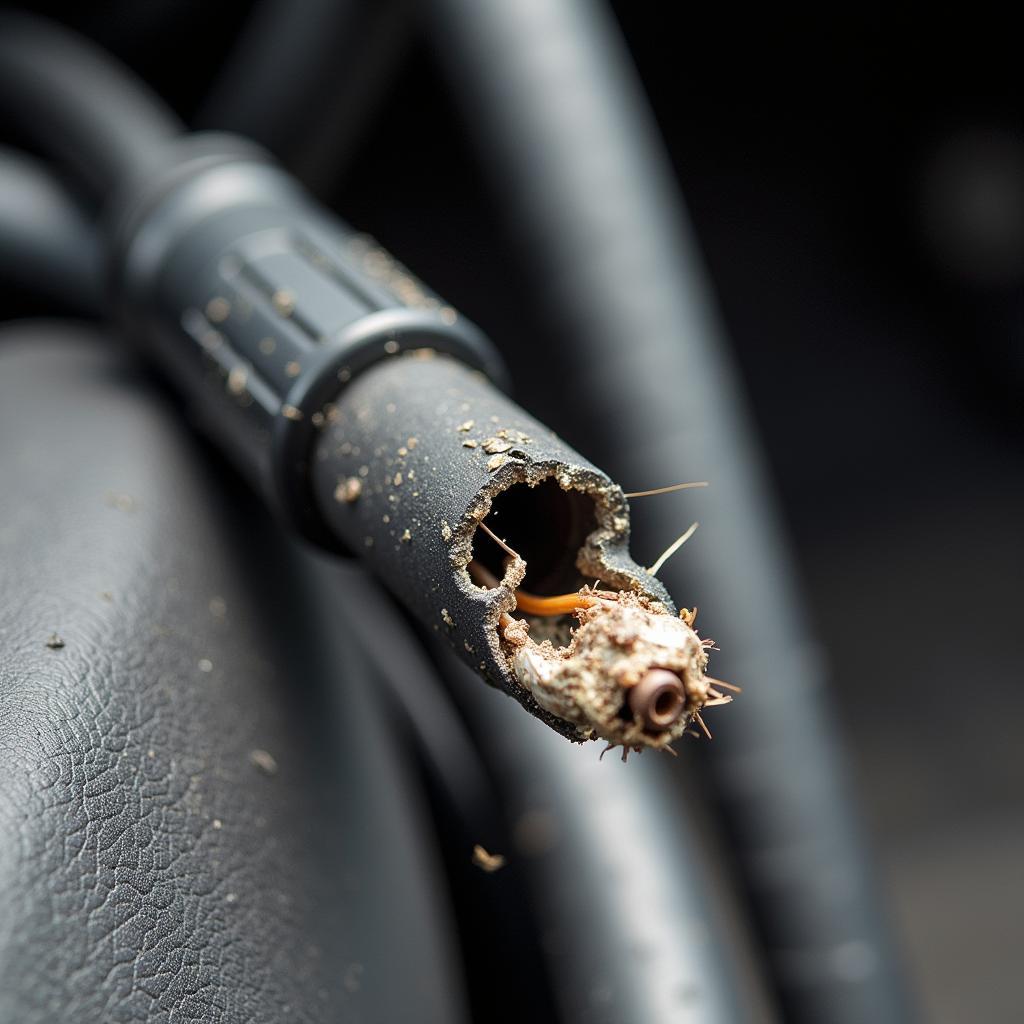Bad purge valve problems can plague any car, regardless of make, model, or age. Understanding these common issues, their symptoms, and how to diagnose and fix them can save you time and money at the mechanic. This article will delve into the intricacies of purge valve malfunctions and provide you with the knowledge you need to tackle these problems head-on.
What is a Purge Valve and Why is it Important?
The purge valve is a small but crucial component of your car’s evaporative emissions control (EVAP) system. This system prevents harmful fuel vapors from escaping into the atmosphere. The purge valve acts as a gatekeeper, opening and closing to allow these vapors to be drawn into the engine and burned during combustion. A malfunctioning purge valve can disrupt this process, leading to a variety of performance and environmental issues.
Common Bad Purge Valve Problems
Several symptoms indicate a potential purge valve problem. These can range from minor annoyances to more serious drivability issues.
Rough Idle
One of the most common bad purge valve problems is a rough idle. A faulty purge valve can disrupt the air-fuel mixture, causing the engine to stumble or stall at idle.
 Rough Idle Symptoms of a Bad Purge Valve
Rough Idle Symptoms of a Bad Purge Valve
Engine Misfires
Another sign of bad purge valve problems is engine misfires. If the purge valve is stuck open or closed, it can cause the engine to misfire, resulting in a loss of power and decreased fuel efficiency.
Check Engine Light
The dreaded check engine light can illuminate for various reasons, and a bad purge valve is one of them. A diagnostic trouble code (DTC) related to the EVAP system, such as P0440, P0441, or P0446, often points to a purge valve issue.
Hard Starting
A bad purge valve can also make it difficult to start your car. If the valve is stuck open, it can flood the engine with fuel vapors, making ignition challenging.
Diagnosing Bad Purge Valve Problems
Diagnosing a bad purge valve involves a few simple steps:
- Check for Diagnostic Trouble Codes (DTCs): Use an OBD-II scanner to retrieve any stored DTCs. Codes related to the EVAP system will suggest a potential purge valve problem.
- Visually Inspect the Purge Valve: Locate the purge valve (usually near the engine) and check for any signs of damage, such as cracks or leaks.
- Test the Purge Valve: You can test the purge valve using a vacuum pump. Apply vacuum to the valve and see if it holds. If it doesn’t, the valve is likely faulty.
What Does a Bad Purge Valve Sound Like?
Sometimes, a bad purge valve can produce a clicking or hissing sound. This is often caused by a faulty solenoid within the valve.
Fixing Bad Purge Valve Problems
In most cases, the solution to bad purge valve problems is simple: replace the valve. This is a relatively inexpensive and straightforward repair that can be done by a DIYer or a mechanic.
Bad Purge Valve Problems: What to Do
Don’t ignore the signs of a bad purge valve. Addressing the issue promptly can prevent further damage and ensure your vehicle runs smoothly and efficiently.
In conclusion, bad purge valve problems are common to all cars and can manifest in various ways. Recognizing the symptoms, diagnosing the issue, and replacing the faulty valve are key to maintaining your vehicle’s performance and protecting the environment. Need further assistance? Connect with the experts at AutoTipPro for personalized advice. Call us at +1 (641) 206-8880 or visit our office at 500 N St Mary’s St, San Antonio, TX 78205, United States.
FAQ
-
How much does it cost to replace a purge valve? The cost typically ranges from $50 to $200, including parts and labor.
-
Can I drive with a bad purge valve? While you might be able to drive for a short time, it’s not recommended. It can lead to further damage and decreased fuel efficiency.
-
Where is the purge valve located? It’s usually located near the engine, connected to the EVAP system.
-
How often should I replace the purge valve? There’s no set interval. Replace it as needed when it shows signs of malfunctioning.
-
Can a bad purge valve damage my engine? While it’s unlikely to cause catastrophic engine damage, it can negatively impact performance and fuel economy.
-
How long does it take to replace a purge valve? It’s a fairly quick repair, usually taking less than an hour.
-
What tools do I need to replace a purge valve? Basic hand tools, such as screwdrivers and pliers, are usually sufficient. You may also need an OBD-II scanner.







Leave a Reply